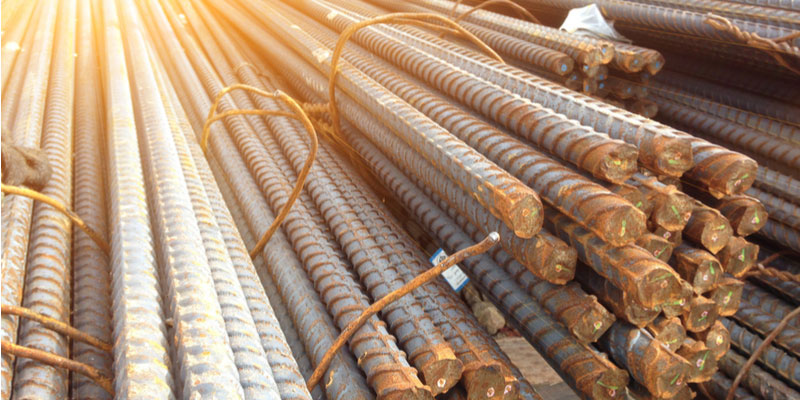Not all surfaces need concrete rebar reinforcement, but adding it makes concrete stronger and more resistant to large cracks. Concrete surfaces expected to carry heavy trucks or machinery do need concrete rebar reinforcement. Rebar reinforcement has been used to provide concrete with the support necessary to withstand tension forces for over 150 years.
Concrete is incredibly strong in terms of compression but it doesn’t have much tension strength. That’s where concrete rebar reinforcement comes in handy. Without rebar reinforcement, concrete is highly prone to cracks due to tension forces. Rebar helps prevent cracks from growing wider largely by preventing cracked slabs from moving apart.
What is Rebar?
Rebar is shorthand for reinforcing bar, also known as reinforcement/reinforcing steel. No matter what you call it, it’s a steel bar or mesh of steel wires formed to create tension in reinforced concrete as well as masonry structures. Rebar helps uphold a building’s strength and compression by holding it in a compressed state.
Reinforcing bars are made from a variety of hot-rolled steel materials. Most are made of new steel billets, but materials can also be derived from steel debris or even old railroad tracks. Rebar is marked with an identifying symbol to indicate where it was produced. Another number you’ll find on concrete rebar reinforcement is rebar yield strength, which is either a 60 or 75, or metric 420 or 520.
Do You Need Concrete Rebar Reinforcement?
Not all projects require the use of concrete rebar reinforcement, but adding it will greatly reduce the number of cracks that appear in concrete surfaces over time. Concrete surfaces required to uphold large trucks, heavy machinery or nonstop traffic need concrete rebar reinforcement. On the other hand, if your driveway is only expected to uphold the family minivan, you might not need rebar reinforcement.
There’s also the option for welded wire mesh made into galvanized panels that offer added reinforcement. This is a common solution for everyday residential driveways that are not regularly driven on by heavy trucks. Mesh is thinner than rebar reinforcement, but it’s also less expensive.
The experts at Turnbull Masonry are more than happy to help you decide if you need concrete rebar reinforcement or not. Contact us today!
Putting Rebar in Its Place
Rebar is recommended for concrete that measures 5-6 inches in depth. The type of and intended use of concrete impacts the need for rebar reinforcement. Rebar must be placed at the center of or slightly above the center of the concrete slab—hence why it should be a certain thickness for best results.
“Chairs” is a term used to define supports placed beneath rebar grids to prop them up. Rebar grids are placed upright with equal spacing. Bars are fastened together at every intersection using metal wire. Minimum concrete coverage must be adhered throughout the entire slab, while the edges must be equally spaced from all sides of the slab.
What are Deformed Bars?
Most reinforcement bars are equipped with heavy ridges known as ‘deformed bars.’ The point of these ridges is to help bind the reinforcement of concrete. While there are no regulations on deformed bar patterns, there are regulations for spacing and bump height. Deformed bars are mandated in many situations, although plain bars are applied when the reinforcing steel must slide, such as on highway pavements or segmented bridges.
5 Different Types of Concrete Rebar Reinforcement
1. Welded Wire Fabric
Welded Wire Fabric is made from a combination of steel wires placed at right angles and “electrically welded at all steel wires crossings.” This type of rebar is commonly used for slab-on-ground-slabs on compacted ground.
2. Expandable Metal
Expandable Metal, also known as wire mesh reinforcement, is basically sheet metal placed in parallel lines and then expanded out into diamond or square shapes. This technique might be used when thick plaster is necessary or for reinforcement of light concrete installation.
3. Stainless Steel Rebars
Stainless steel can be used to make a type of reinforcing bar that is resistant to galvanic corrosion. This is a good option in areas prone to corrosion issues, as well as in areas where it’s difficult or costly to make repairs.
4. Sheet Metal Reinforcing Bars
This type of concrete rebar reinforcement is commonly used for floor slabs, stairs, and roofing.
5. Epoxy-Coated Rebars
This is a higher cost rebar typically reserved to areas with high salinity or where corrosion is a major issue.

